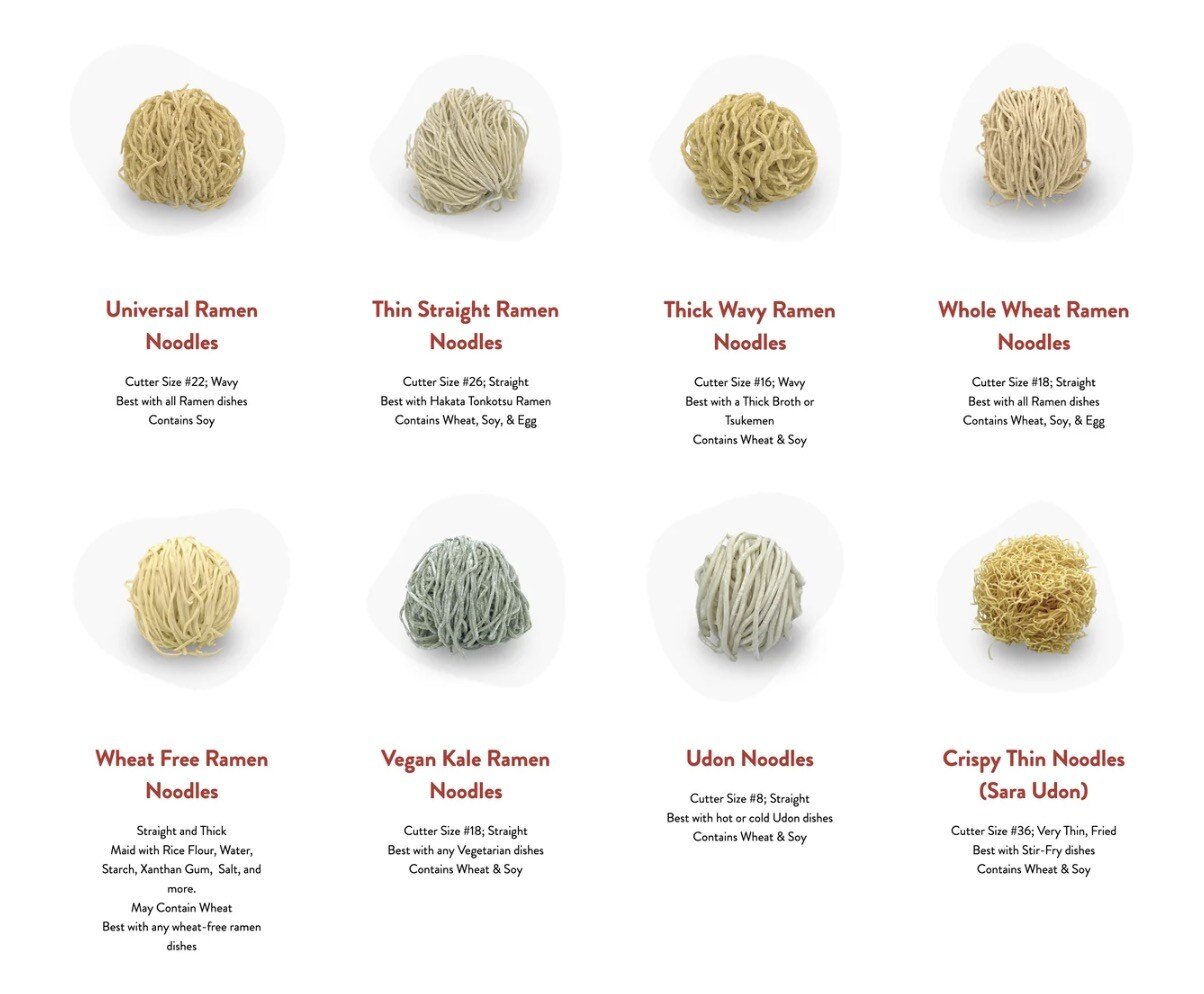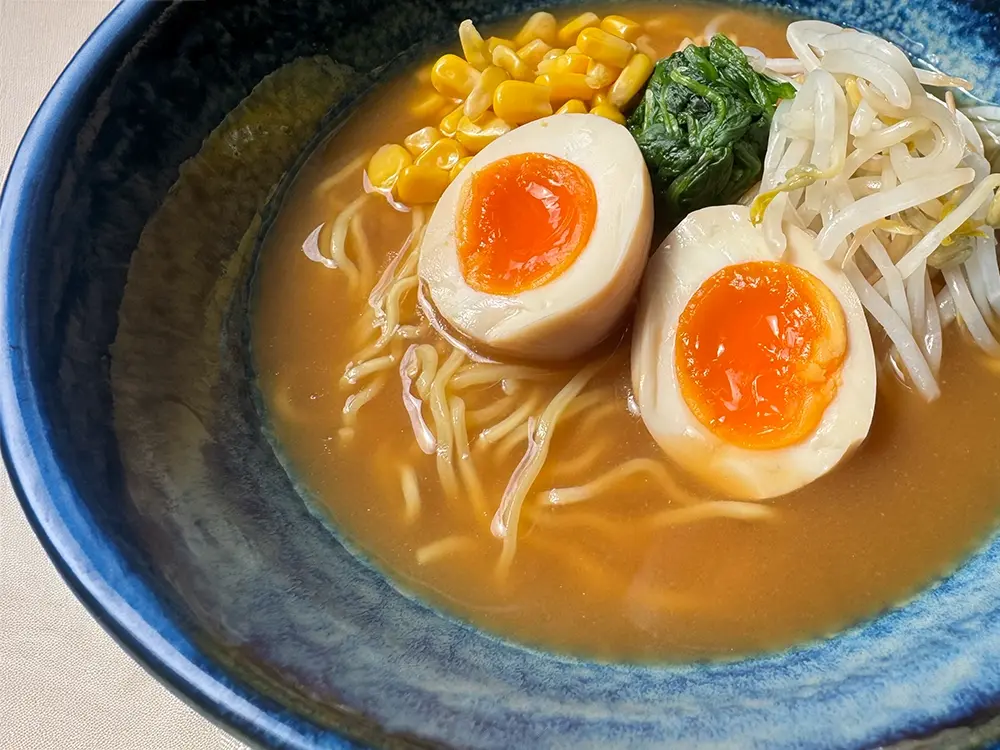Noodle Cut Thickness
Ramen Insight
The thickness of ramen noodles significantly influences the characteristics and texture of the ramen. The thickness affects how the noodles interact with the soup, their texture, and chewiness, prompting ramen shops to select the noodle thickness according to their specific recipes.

Relationship Between Noodle Thickness and Soup Interaction
Thin noodles absorb soup quickly and are suitable for light broths. Thick noodles interact well with rich soups. Thin noodles are characterized by their soft, smooth texture, while thick noodles offer a satisfying chew. Each ramen shop selects the thickness of noodles based on the type of soup offered and the desired style of ramen, so it is common for the same shop to provide different types of noodles.
-
Thin Noodles: Cutter Blade Numbers #28 - #26
Commonly used in Hakata ramen from the Kyushu region, these noodles are characterized by their quick cooking time (within 45 seconds) and their gritty texture due to low hydration. -
Medium-Thin Noodles: Cutter Blade Number #24
A commonly used thickness nationwide, offering a balance of texture and ease of lifting the soup. Suitable for shio ramen. -
Medium-Thick Noodles: Cutter Blade Numbers #22 - #20
Frequently used in Tokyo ramen and Yokohama Ie-style ramen, these noodles offer a chewy texture. Cutter #22 is suitable for shoyu ramen, and #20 for miso ramen. -
Thick Noodles: Cutter Blade Numbers #18-#14
Often preferred in tsukemen and Jiro-style tonkotsu ramen, these noodles excel at incorporating the soup, making them a great match for rich broths.





